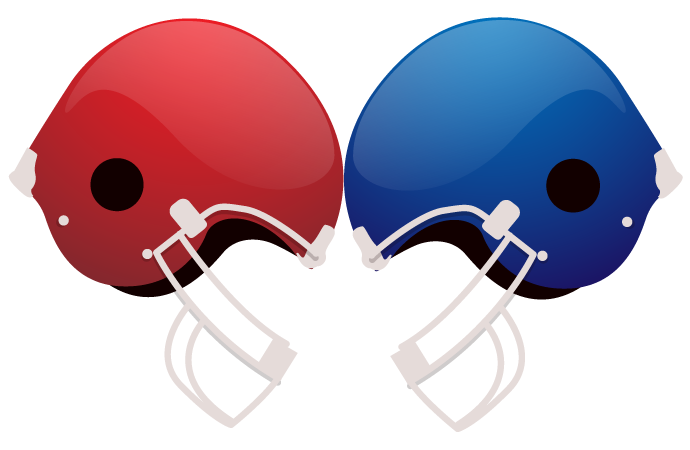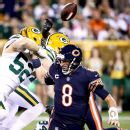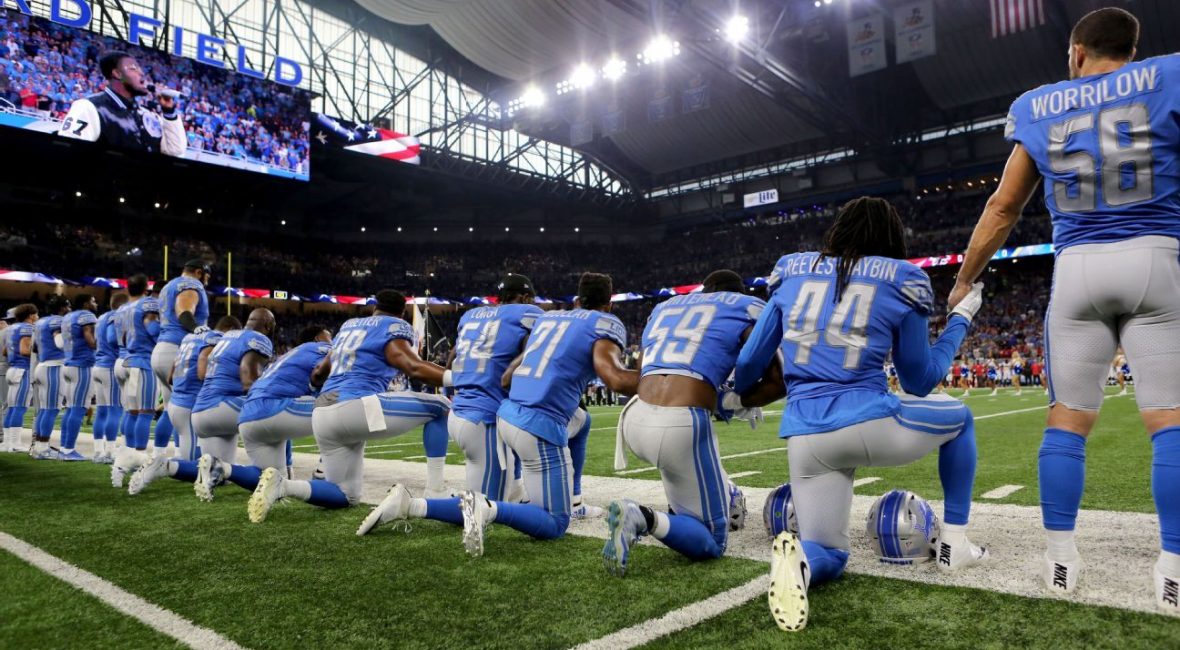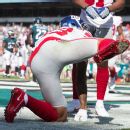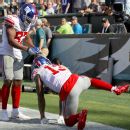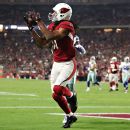GREEN BAY, Wis. — Chicago Bears coach John Fox said he’s evaluating every position, including quarterback, after Mike Glennon had four turnovers in Thursday night’s ugly 35-14 loss to the Packers.
“We need to make a lot of changes,” Fox said when asked specifically about quarterback. “We will evaluate everything, and we’ve got a lot of work to do before we line up against Minnesota on [Oct. 9]. We are going to look at everything.”
Fox refused to pin all of the Bears’ woes on Glennon.
“I don’t think all of those were Mike’s turnovers,” Fox said. “Again, there are a lot of people out there that are involved. We had dropped balls. We had penalties. There was plenty of stuff to pass around.
“I think we evaluate every day. It’s not going to be a new novelty; it’s just that obviously we have to fix some things on our football team. We are 1-3 to start the season. Not just the quarterback. Everybody wants to talk about the quarterback. We have more issues than the quarterback.”
But none seemingly more pressing.
The Bears promised Glennon — signed for $16 million guaranteed — the starting job in 2017, even after drafting quarterback Mitchell Trubisky second overall in April. But Glennon has eight turnovers in four games.
According to Elias Sports Bureau, Glennon is the only Bears player in the past 40 seasons with three turnovers in a half twice within the first four games of a season.
“The No. 1 thing we obviously have to fix are the turnovers,” Glennon said. “I’m not giving our team a chance when you turn the ball over like that.”
Trubisky — elevated to No. 2 on the QB depth chart ahead of Mark Sanchez four weeks ago — sparked the Bears’ offense in the preseason, passing for 364 yards, three touchdowns and zero interceptions for a 106. 2 passer rating.
“Again, Mitch is a young player, four regular-season games into his rookie season in his NFL career,” Fox said. “Like I said, we have a big gap here [in terms of Trubisky’s experience versus Glennon’s]. We will look at everything and everybody, not just the quarterback position.”

